In this draft season, Joe Musgrove was getting some “sleeper” hype because of his performance in the second half of last year. He had always struggled with injury but seemed to really bounce back when he returned last season. He started off the 2019 season well but has since regressed to where most owners have wondered whether he is even worth rostering. So let’s take a deep dive and see what is going on with Joe.
Four-Seam Fastball—Worse or Just Bad Defense?
Musgrove made some pretty interesting strides with his four-seamer last year. He threw the pitch inside the zone 59.6% of the time, which was a decrease from 63.8% in the previous year, and it was generating more contact. Even with the increase in contact, it was weak contact. The average exit velocity was 88.2 mph, which was below the league average for the four-seam fastball (89.2 mph). He was also generating infield fly balls 25.6% of the time. Infield fly balls are essentially easy outs and definitely something pitchers like to get. Unfortunately, the strides Musgrove made with the four-seamer last year have regressed.
The average exit velocity off Musgrove’s four-seamer is 90 mph, which is pretty much at the league average of 89.9 mph. Musgrove is also not getting those easy strikes—aka infield fly balls—this year either. His infield fly-ball percentage is back to where it was in 2017, just 20.6%. What is strange is that it seems he is throwing it in the same part of the zone.
So what gives? Let’s dig in a little deeper.
I first took a look at Musgrove’s two-strike rate from last year and this year. It had decreased by almost two ticks from 24.1% to 22.3%. I then took a deeper dive into the four-seamer because it seemed to regress the most this season. Take a look at batting average on the four-seamer by count. Last year, he was getting clobbered on 2-0 and 2-1 counts.
This year it is a bit different. Musgrove is getting beaten both early in the count, 0-0 or 0-1 counts, and also later in at-bats, specifically 3-1 counts.
My first thought was that batters knew what was coming, so they were swinging more. Dead end. In 0-0 counts, batters are swinging at the four-seamer 3.5% of the time versus 3.9% of the time last year.
What else might have changed in Pittsburgh? Their outfield is much different this year.
Taking a look at the spray chart for all base hits on the four-seamer really paints a picture of what is going on here. Musgrove is really missing Corey Dickerson playing in left field. Above is a spray chart from 2018 when Dickerson playing every day.
Now, take a look at this year:
So who is playing left field while Dickerson has been on the IL? A combination of Melky Cabrera, J.B. Shuck, and Bryan Reynolds. According to Statcast, Cabrera and Reynolds both have negative two outs above average. In fact, Cabrera has the lowest amount of field covered for all qualified players at 28.1 feet, which is 5.4 feet below average. Last year, Corey Dickerson was 10 outs above average and covered the third-most ground at 36.3 feet. If Pittsburgh can move away from Cabrera and put Dickerson back in left field, I feel confident Musgrove’s numbers will improve.
Sinking Sinker?
Another pitch that seems to have regressed a bit this year is Musgrove’s sinker. Batters are hitting an incredible .341 with an expected batting average of .347 off the pitch. He has traded fly balls for line drives. Take a look where all the line drives were thrown this year:
I’m no genius, but that is not where you want a 90 mph pitch that has some of the worst side-to-side movement for a sinker. Batters are loving the offering and smoking it. The average exit velocity on these pitches was 99.4 mph. The only bright side is even though his sinker has been crushed, it still has a very low launch angle.
The sinker overall has a -1-degree launch angle. I was pretty encouraged with his sinker at the beginning of the season, but it has massively regressed since. In April, Musgrove was using the pitch less overall but more in 1-0, 2-0, and 2-1 counts, and it had a batting average against of .174 and xBA of .298. Now he is throwing the pitch more overall and at the beginning of the at-bat. If Musgrove can move away from using his worst pitch early in counts, results on the sinker should regress back to more of April’s numbers.
Better Slider
Musgrove’s slider is a wipeout pitch and has actually gotten better this season. The strikeout rate of 37% is easily a career high, as is the swinging-strike rate of 20.2%. The bugaboo this year has been the walks. The walk rate on the pitch has increased from 2.1% all the way up to 8.6%. However, it was just a few games in mid- to late April where the control on the pitch wavered a bit. Batters are also hitting fewer line drives and fly balls and hitting more ground balls.
So what is different? Musgrove’s slider has gotten about an inch less drop but more 6 more inches of break. What is curious is batters are laying off the outside pitch but swinging at the slider in the zone 67.7% of the time, which is up from 56.8%. When batters swing within the zone, Musgrove has been able to limit contact to 61.5%. Inside the zone contact was 88.1% last year. Another thing that is encouraging is the velocity on the pitch is back to where it was when he finished off 2018.
Tweaking the Mechanics
Another interesting note on Musgrove: While he is getting more spin on the majority of his pitches, velocity has been down. I mentioned before that his velocity has been creeping upward the entire year. However, I noticed he is getting less extension on all his pitches.
Last year, he was getting about 6 feet of extension, but now, he is only getting about 5.7 feet. Along with the drop in extension, he is also, strangely, releasing his four-seam fast in particular more slowly.
So he is throwing his four-seamer slower with less extension, which could explain the drastic downturn in his effective velocity.
I also noticed there was something different on how Musgrove looked from 2018 to how he looked this year. I sent a couple of videos over to Nick Pollack. He agreed something was different, and it looked like he was not flattening his back as much this year.
So What Should Fantasy Owners Do?
To me, it seems like Musgrove is working his way through some mechanical adjustment. Even so, I believe Musgrove is a much better pitcher than what he is currently showing us. According to Statcast, Musgrove has the 18th-best barrels per plate appearance rate at 3.9% and the 16th-best barrels per batted-ball event rate of 5.3%. He is also getting pretty unlucky with runners on base. His left on base rate is a career-low 58.4%, mainly because of poor defense.
So as a Musgrove owner, I am holding and expecting him that fantasy asset in the second half of the season.
Featured image by Justin Paradis (@freshmeatcomm on Twitter)

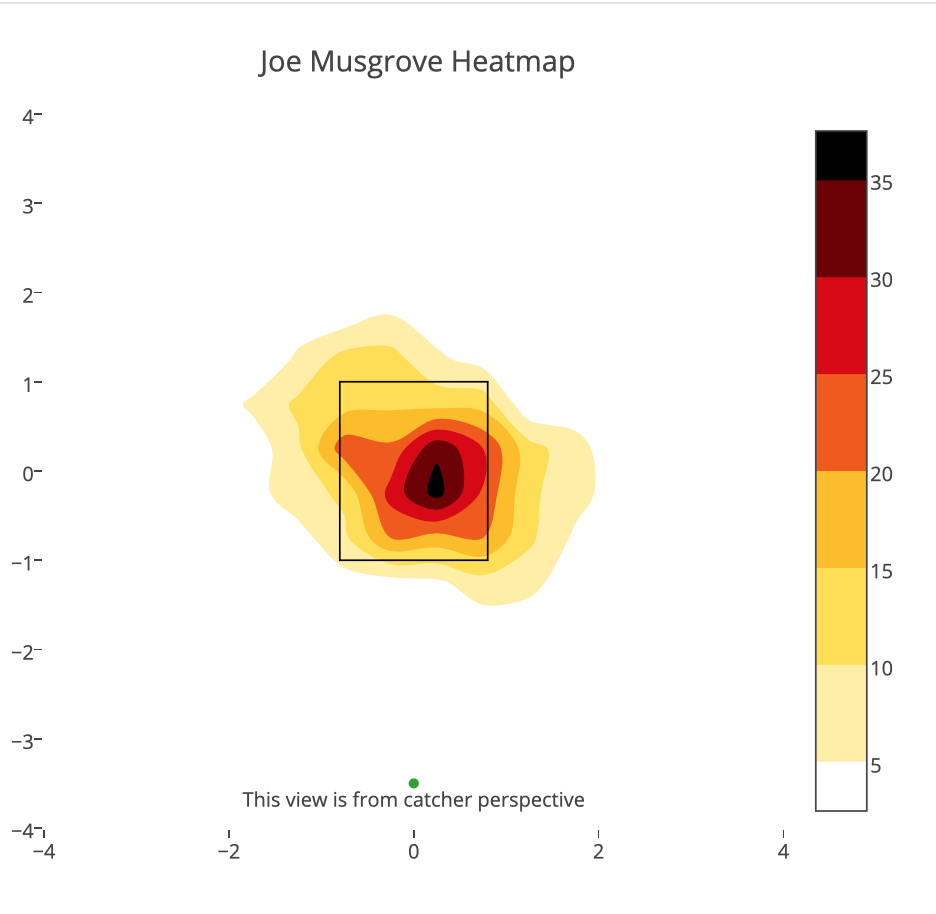
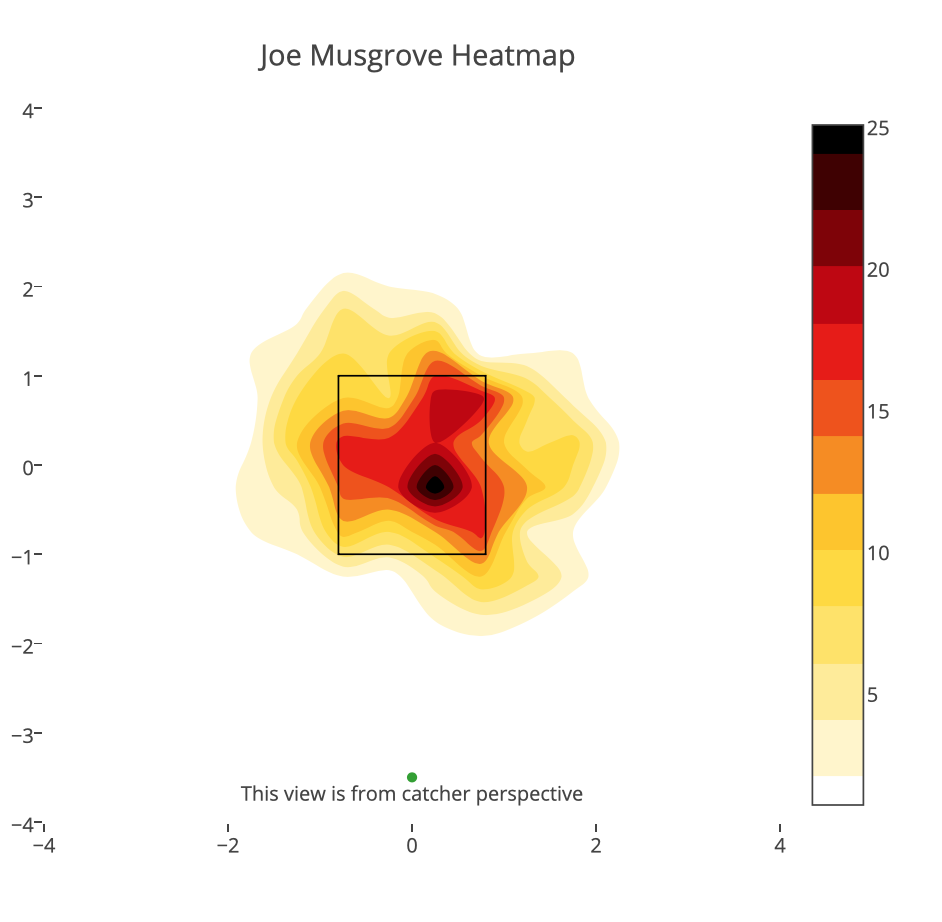
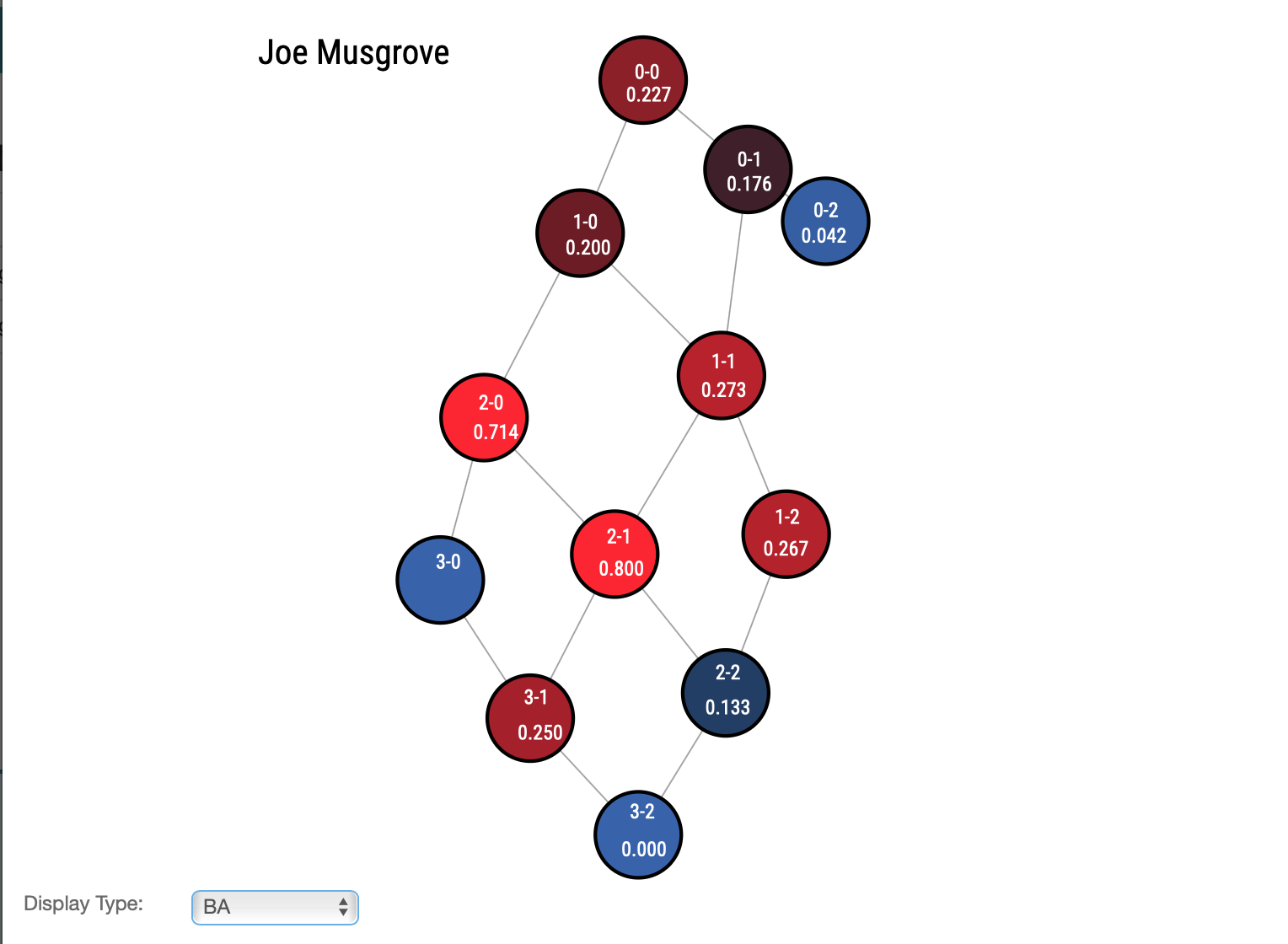
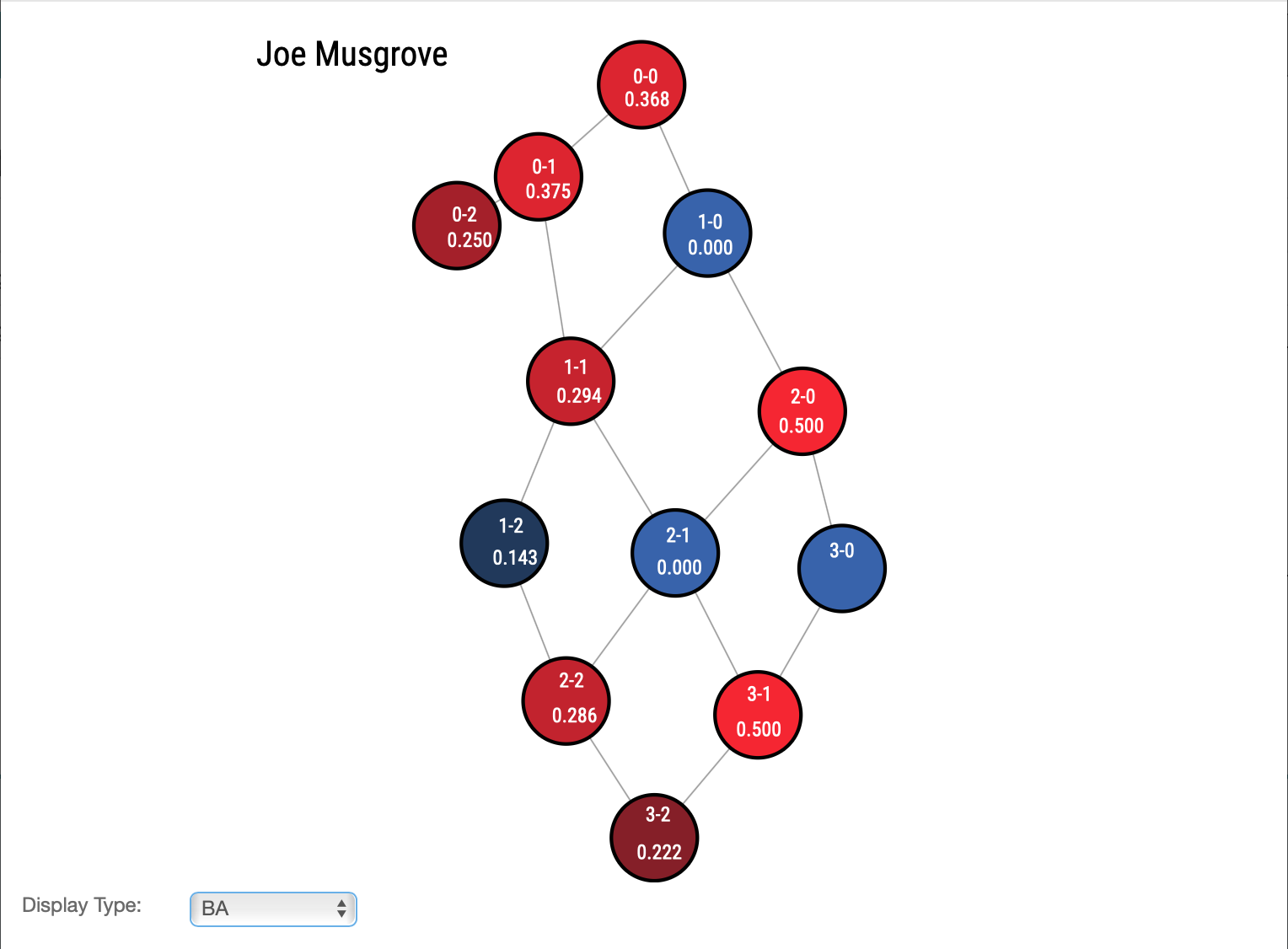
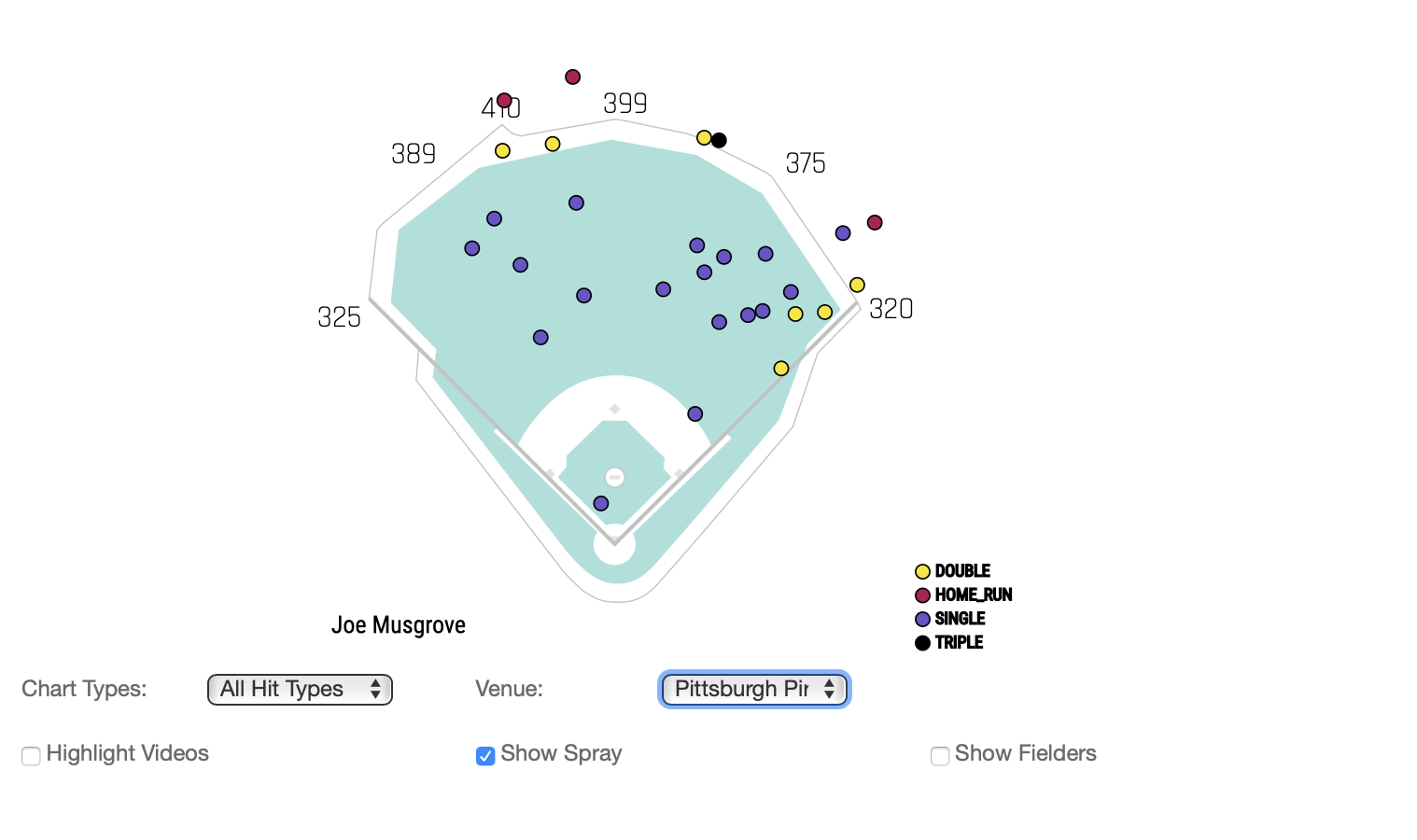
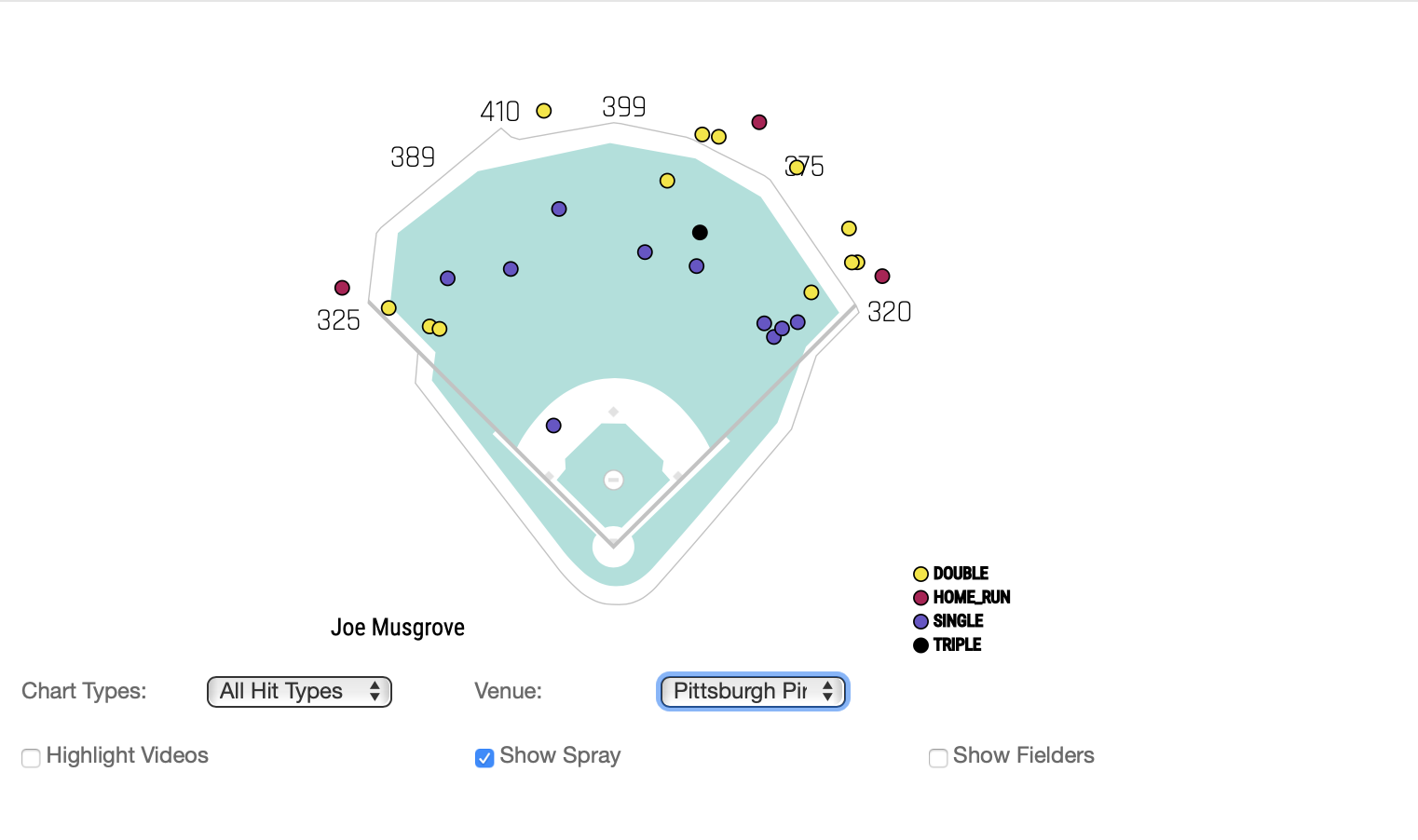
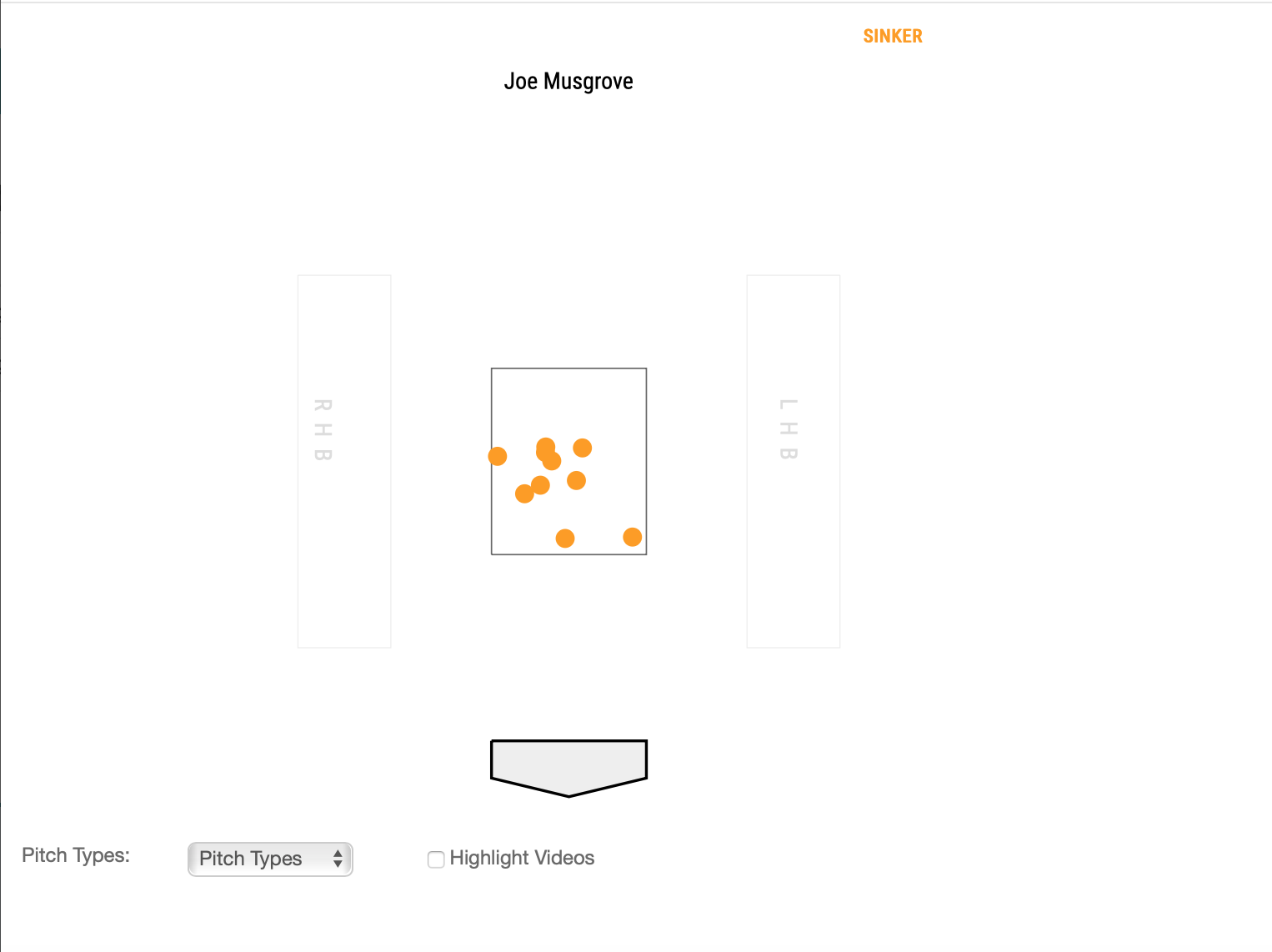
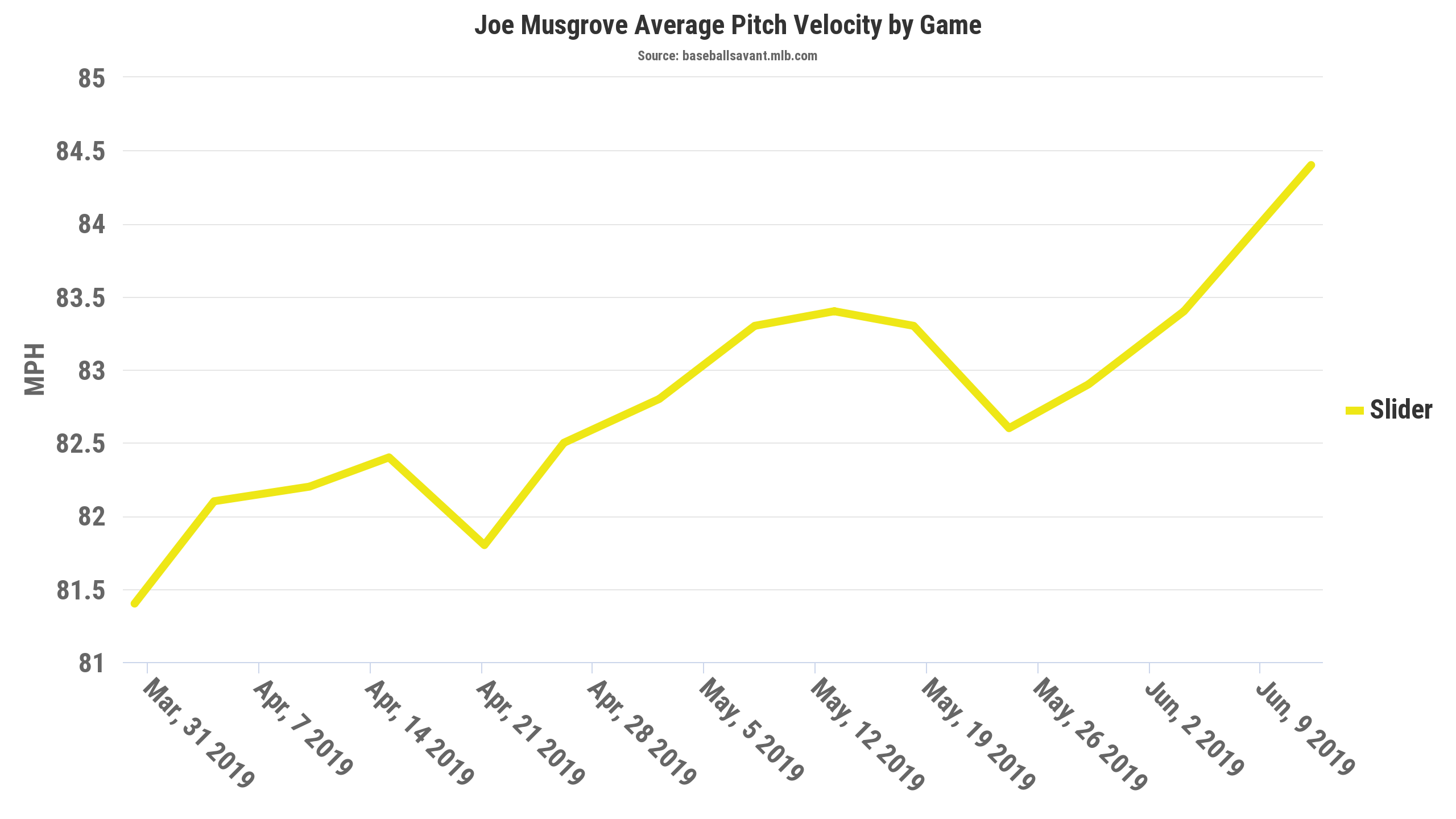
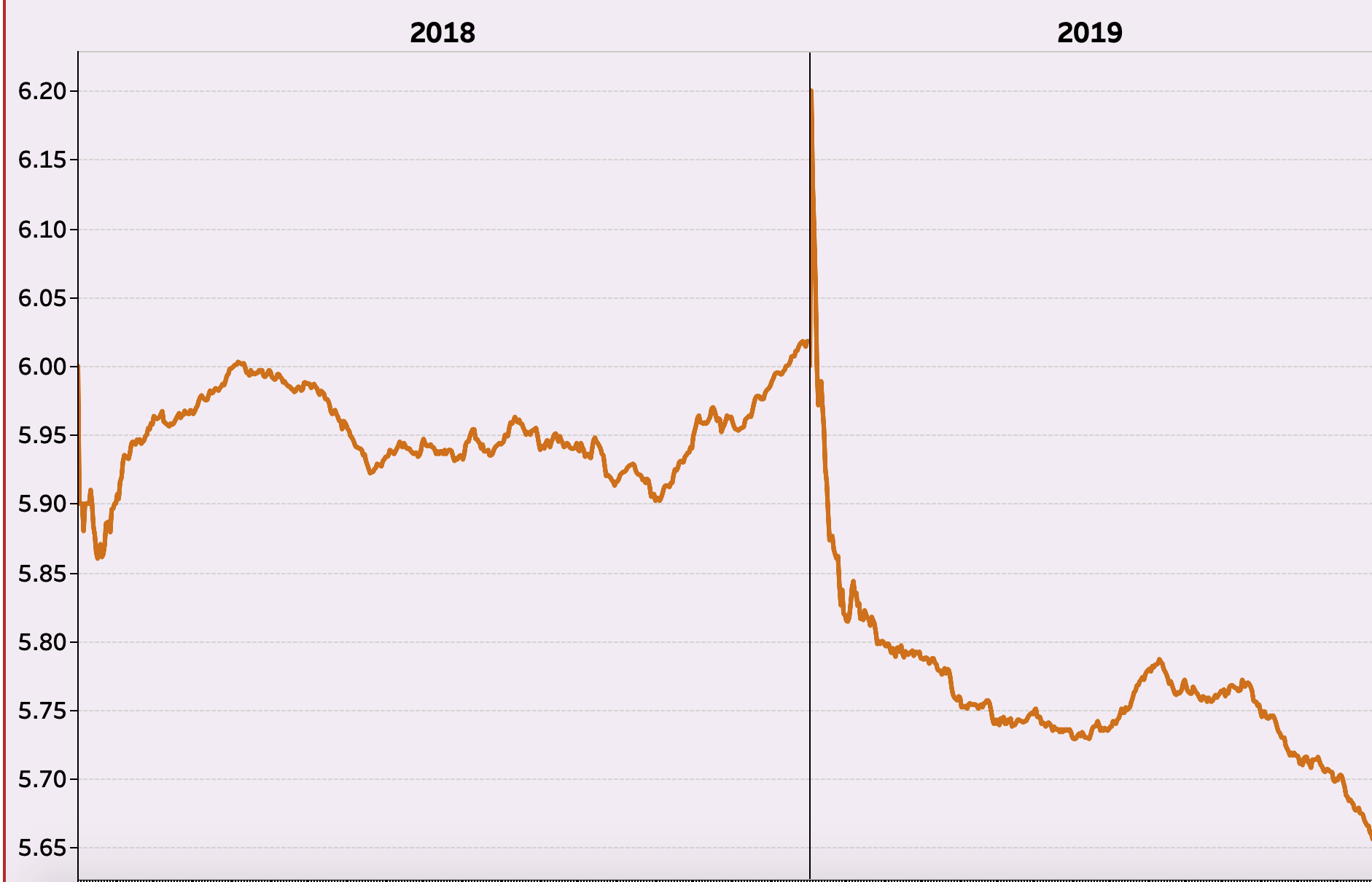
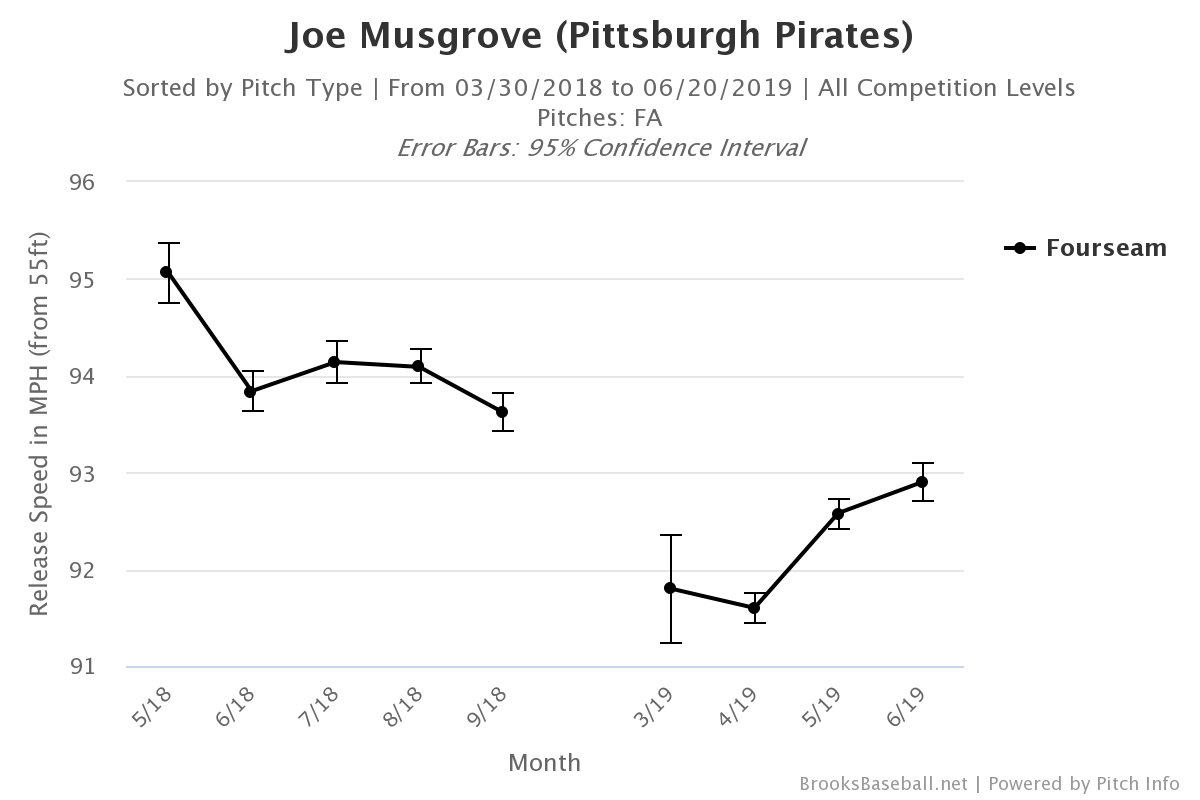
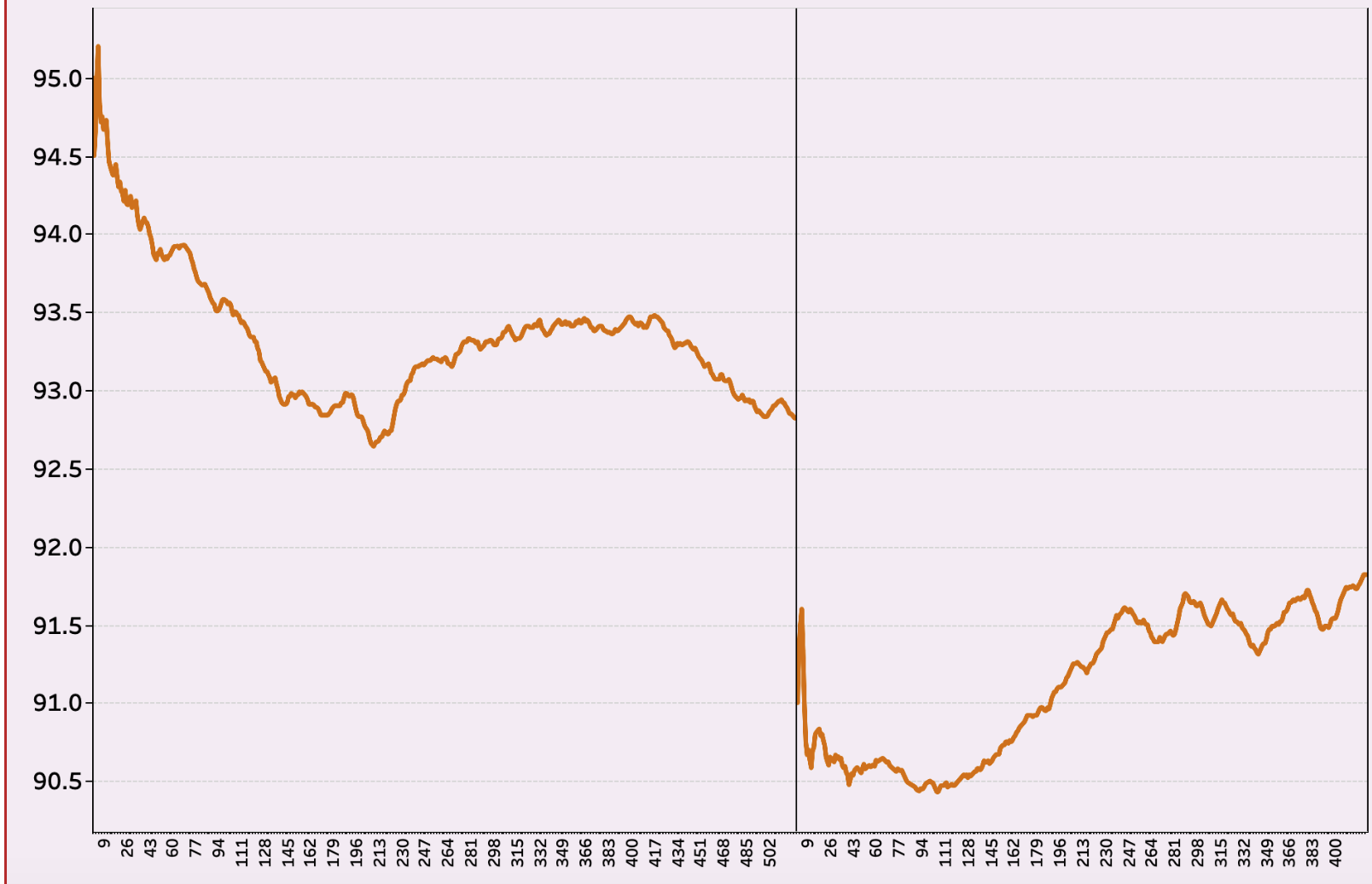
Thanks! Great article Shelly!
Great breakdown, Shelly. Been wanting a deep dive on Musgrove. Loving your work here and on RotoGraphs. Was that critical path graphic of BA by count from Baseball Savant or some other place or an original visualization?
As an aside for all Pitcher List authors: great content but puns are like changeups. They lose their effectiveness if they’re all you throw. And some of them have been turrrrble.
Does the lack of extension reveal that he is playing through injury?